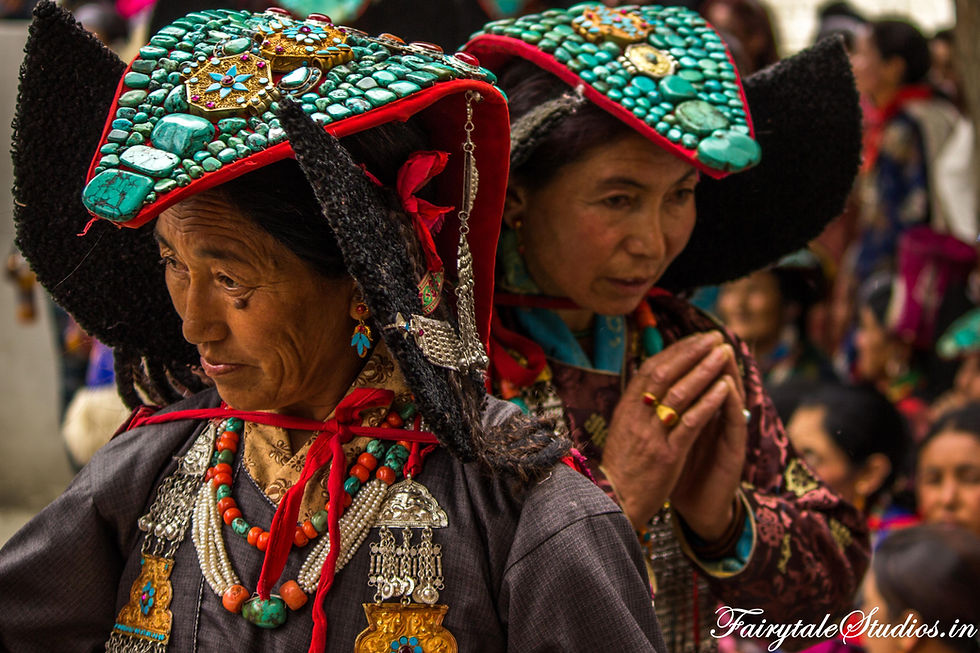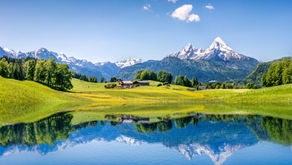Leh to Kargil - The Zanskar Odyssey
Day 2 of the trip
The Zanskar Odyssey is a series of 7 blogs which describes our journey through Zanskar Valley, a remote yet beautiful region of India. Surrounded by the Himalayas, our plan was as follows -
Day 1 - Reach Leh
Day 2 - Start from Leh and reach Kargil
Day 3 - Start from Kargil and reach Rangdum
Day 4 - Start from Rangdum and reach Padum, the capital of Zanskar Valley
Day 5 - Explore areas surrounding Padum
Day 6 - Attend Stongdey Gustor Festival
Day 7 & 8 - Return from Padum to Kargil and reach Srinagar to take a flight back
This blog is a continuation of Day 1 of the Zanskar trip: A Day in Leh
This is the second article in The Zanskar Odyssey series where we start from Leh and reach Kargil.
After a tiring day 1 which saw us landing at Leh airport in Ladakh region of India, experiencing some after-effects of sudden altitude changes, visiting two monasteries in Leh (Stakna and Thiksey) and witnessing some spectacular landscapes which only Ladakh is capable of providing, Day 2 of our Zanskar Valley trip started early in the morning as we took the Srinagar-Leh highway (National Highway 1) to reach Kargil. The plan was to reach Kargil by the evening after stopping at a few scenic places on the way. Despite the rough terrains and isolated locations, most of the roads are smooth thanks to BRO (Border Road Organization). Enroute we took a number of halts to digest the splendour of this astounding place which seemed so alien, yet so magnificent.


Magnetic Hill, Ladakh:
Our first stop was the Magnetic Hill famous as Gravity-defying hill. It is believed that objects and cars when placed on one particular spot on the road, roll uphill in defiance of gravity even when the engine of the car is not running. We enjoyed clicking some road photographs here; though we didn’t really experience the car going up on the inclined road as claimed.
Sangam - Confluence of Indus and Zanskar rivers, Ladakh:
The next stop was Sangam in Nimmu village. Sangam offered us a breathtaking view of the confluence of two rivers - The Indus River and the Zanskar River. Indus originates in Tibet close to the Mansarovar Lake whereas Zanskar has two branches of its origin – first is the Doda and second is the Lungnak River; both merging in Zanskar central valley. The Indus and Zanskar, 2 disparate rivers with different sources, different histories, different journeys and even different colours (Zanskar is muddy while Indus is greenish-white), unite at Sangam, letting go of all their differences giving us an amazing view. Both the rivers converge at this point in Nimmu village and flow towards Pakistan eventually ending up in the Arabian Sea.



After the Sangam, the resulting river also named Indus kept following us throughout the way. Or shall we say we followed the Indus river throughout. Our next halt was a very colourful wooden bridge hanging on the mighty Indus River flowing with full force. The bridge was fully wrapped with the Tibetan prayer flags. The flags are supposed to be blown by the wind to spread the goodwill and compassion into all-pervading space and the air is purified and sanctified by the mantras written on them. The place was surrounded by huge barren rocky mountains on all the sides. The rugged texture of the mountains gave an unfriendly feeling. It let no living thing reside on it. For ages, these tough, resolute mountains must have stood here. They must have seen millions of days and as many nights. But any and every attempt of moss or grass to grow on it would have been shot down emphasising their individuality, announcing their independence. Their only accomplice through countless seasons might have been the equally cold and furious river Indus. The location gave a feeling of timelessness. A small monastery was located on the other side of the bridge. The path down to the river wasn’t very steep; hence we also trekked down to the river to collect pebbles and click some photos. The water, however, was ice cold and did not allow us to step into it. Spending some time there, we were again on the road to resume our journey.




Lamayuru Monastery, Ladakh:
Some time had passed on the road and we were getting used to watching barren rocky mountains all around us. Suddenly the landscape started changing and we realised we were about to reach our next stop - Lamayuru monastery. Lamayuru is famous for its unusual moon-like landscapes carved into Greater Himalayas, famed as the Moonland. The soft craters and the orangish-yellow land simply add charm to the surreal beauty of Lamayuru. The sand-coloured formations seemed like enormous ant hills in the middle of the rocky Himalayas. Lamayuru monastery is a Tibetan - Buddhist monastery dating back to the 11th century. It is one of the largest and oldest monasteries in Ladakh. The monastery like others, houses a rich collection of artefacts, wall paintings, statues, thangkas, carpets and an impressive 11-headed, 1000 eyed image of Chenrezig. We savoured mouth-watering ginger-lemon-honey tea in a small café outside the Lamayuru monastery where we also bought the vibrant and colourful Tibetan flags and fridge magnets. After spending some time on the hill and clicking some amazing shots we bid adieu to magical Lamayuru monastery.







Mulbekh Monastery, Kargil:
Back on the road, on our way to Kargil, we were continuously impressed by Ladakh and its natural wonders around us. Hardly did we know that a surprise was awaiting us at Mulbekh village where we stopped for lunch. The small monastery in Mulbekh was celebrating its annual festival on that particular day which they called as Mentok Stano (Flower mela). The Mulbekh monastery pictures an enormous figure of standing Maitreya Buddha (The Buddha-to-come) carved on a rock facing the road. Maitreyas are also known as Chamba, so Mulbekh Monastery is popularly known as Mulbekh Chamba. The monastery festival is a way to build social companionship among people residing in villages situated far off in the Ladakh and Zanskar valley. The people celebrate victory of good over evil with colours, flowers, dance, music and masks. The festival showcases the present-day culture of Ladakh and Zanskar Valley. The most celebrated event was the dance performed by men and women wearing traditional costumes. The jewellery and accessories worn by the ladies were truly amazing. They wore a colourful dress, a turquoise stone-studded headgear (called Perakh) and a bright feathery scarf that flowed down their back further tied around the shoulders. We were also invited to join in their ancient dance which narrates- Pluck a flower and offer it to God. The monks offered tea and biscuits to visitors.







Outside the Mulbekh monastery, all the kids played a typical gambling game; the lead shouting- Make 50 out of 10; where one had to bet Rs.10 on one of the 6 signs etched over big cardboard and the lead throws a dice which decides which sign wins and who will take all the money. All in all, it was a joyous celebration. People from various neighbouring villages had come to participate and watch the festival and we realised there were two different Ladakhis in sight. The older generation who were dancing in traditional clothes and were more interested in giving their respects to Maitreya Buddha and the new generation which wore jeans and jackets, carried mobile phones and seemed like any other young crowd we see in urban cities. Probably the generational divide that is present around us has no boundaries. We also happened to make some very cute kid friends who were more than happy to have a good long chat with us. There was a sea of pretty faces around us, some wrinkled with a lifetime of festivals behind them and some fresh with a lifetime of celebration ahead of them. We stood in the Mulbekh monastery for 4 hours dancing, clicking and enjoying as if it was our festival. We almost forgot that we were just tourists visiting this fascinating place, meeting these beautiful people and we must move on.







Leaving Mulbekh, we directly drove to Kargil. We were startled to witness how the barren desert-like mountains slowly transformed into greenish ones and how Buddhism gave way to Islam. Kargil is a district and is the second largest town of Ladakh division after Leh and is situated along the banks of the Suru River (Indus). The town lies near the Line of Control (LoC) with Pakistan to its north. Our hotel in Kargil was located right beside the banks of Suru River. Suru River is a tributary of Indus River and originates near Drang-Drung glacier in Pensi-la pass - a place we were going to cross the next day en route to Zanskar Valley. The huge veranda in front of our rooms in the hotel offered us breath-taking views of the river and the city of Kargil. Late in the evening, we visited the Kargil market to capture some street photographs before calling it a day.




Thanks for reading this blog. This was day 2 of our Zanskar Odyssey. Read the day 3 of our journey from Kargil to Rangdum - a journey which stunned us with its landscapes, showed us alien places and ended under starry skies reminding us of our trivial existence.
It will be great if you can let us know what you thought about the blog, pictures or the trip. Feel free to comment below.
Read all our blogs of the series The Zanskar Odyssey by clicking on the links below:































Comments